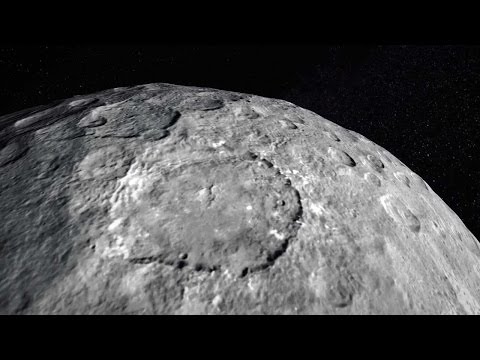UAE has launched the first Arab-built moon rover | Emirates Lunar Mission
UAE ramps up space ambitions with Arab world’s first Moon mission The United Arab Emirates has announced plans to send a compact rover named Rashid to study the Moon in 2024, marking an intensification in the small nation’s spacefaring ambitions. If Rashid is successful, the UAE could become only the fourth country to operate a craft on the Moon’s surface, and the first in the Arab world. The Mohammed Bin Rashid Space Centre in Dubai says its in-house teams will develop, build and operate the 10-kilogram rover, which is named after the late Sheikh Rashid bin Saeed Al Maktoum, who ruled Dubai at the UAE’s creation in 1971. The team will hire an as-yet unannounced space agency or commercial partner to carry out the launch and landing, the riskiest part of the mission. If successful, Rashid would be one of several rovers made by private firms and space agencies that are set to populate the Moon by 2024. The relatively simple rover will have six scientific instruments, including four cameras. Rashid will have just one-tenth of the mass of China’s Chang’e-4, the only currently active lunar rover. The UAE craft will include an experiment to study the thermal properties of the Moon’s surface, providing insights into the composition of the lunar landscape. Another experiment will study the make-up and particle size of lunar dust in microscopic detail, says Hamad Al Marzooqi, project manager for the lunar mission at the MBRSC. Rashid’s most exciting instrument is a Langmuir probe, says Sargeant. A first on the Moon, this will study the plasma of charged particles that hovers at the lunar surface, caused by the streaming solar wind. The team is hoping the craft will also last through the equally long lunar night, when the temperature drops to around −173 °C. He declined to reveal the Rashid mission’s budget, but said that all scientific data would be openly available to the international community. The Emirates Lunar Mission is the first of a series of missions that are intended as a platform for developing technologies, says Al Rais. The technologies will eventually support missions to the Martian surface, and address food, energy and water-security challenges back home, where natural resources can be similarly scarce. «It’s challenging, but as you know we love challenges here in the UAE,» says Sara Al Maeeni, an engineer on the Rashid’s communication system. Rashid’s low weight also means it can fly on a commercial lander, which could reduce the mission’s overall cost. Being small and light means «it’s faster in development and easier to find a lift to the lunar surface», says Al Marzooqi. This will allow the UAE to send frequent missions to the lunar surface, with a variety of locations and scientific objectives, he adds. The country’s satellite programme is only 14 years old, and the nation awarded its first PhD in any field just 10 years ago. It rapidly became a spacefaring nation through a policy of hiring international academic and industry partners to help build and design missions, while training home-grown engineers. Particularly challenging will be sending signals across the 384,000 kilometres to Earth with only the limited power and antenna length of a lightweight rover, says Al Maeeni. The rover team at the MRBSC has been working on the project for around two years, and is designing Rashid based on previous successful probes. They also plan to model and hone a series of rapid prototypes, says Al Marzooqi. Unlike the country’s Hope Mars mission, which was largely built in the United States by both US and Emirati engineers, Al Marzooqi stresses that the entire lunar rover will be developed in the UAE. However, it will still involve international partnerships, he says. That Rashid will get to the Moon is not a given.













